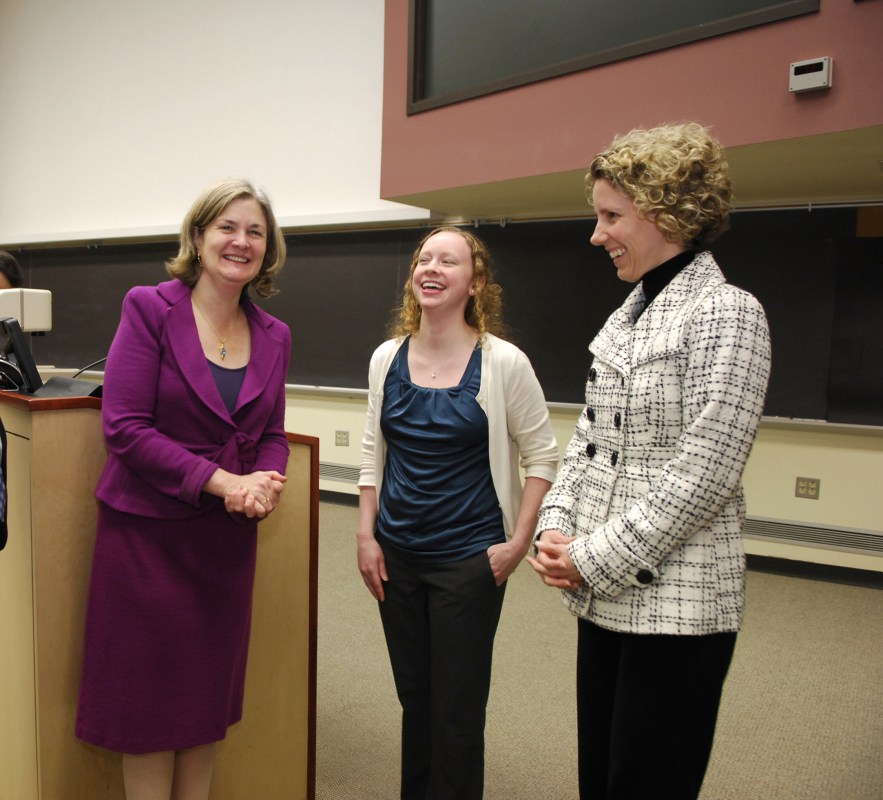
Vanderbilt Prize Winner, Nancy Andrews, M.D., Ph.D., left, talks with Vanderbilt Prize Scholar Winner Emily Anderson, center, and Anderson’s mentor, Alyssa Hasty, Ph.D., following Andrews’ Discovery Lecture last week. (photo by Anne Rayner)
Vanderbilt Prize winner’s research efforts celebrated
Genetic mutations, dietary deficiencies, trauma and blood transfusions, liver tumors and chronic disease all can disrupt the body's iron balance in one direction or another, some with potentially fatal results.
By combining the latest genetic techniques with a keen clinician's eye, Nancy Andrews, M.D., Ph.D., has helped advance current understanding of these disruptions with the goal of improving their diagnosis and treatment.
Andrews, the first woman dean of Duke University School of Medicine, described recent discoveries in iron homeostasis during last week's Discovery Lecture.
Jeff Balser, M.D., Ph.D., vice chancellor for Health Affairs and dean of Vanderbilt University School of Medicine, also presented her with the 2010 Vanderbilt Prize in Biomedical Science. The prize honors women scientists who have made significant contributions to research and to mentoring other women in science.
“This is a tremendous honor for me and I'm very grateful,” said Andrews, who was introduced by Susan Wente, Ph.D., associate vice chancellor for Research and senior associate dean for Biomedical Sciences. “It's also great to be visiting Vanderbilt again. In spite of difficult times, you are making remarkable progress forward. You have an awful lot to be proud of.”
When Andrews entered the field of iron homeostasis in 1995, little was known about how iron moves across cellular membranes in mammals.
Indeed, even today, classic hemochromatosis, a genetic disease that causes the iron overload, is one of the few disorders still treated with an ancient remedy — bloodletting. “Patients would love for us to find alternatives to phlebotomy,” she said. “It's cheap and easy but not fun.”
On the other end of the spectrum, anemia of chronic disease, which is common in patients with infections, trauma, organ failure, rheumatoid arthritis, cystic fibrosis and other chronic diseases, results from the blockage of iron absorption and recycling.
Andrews and her colleagues discovered an important clue to this disorder in patients with glycogen storage disease, which causes severe low blood glucose. These patients, who also were anemic, had liver tumors or ademomas that were producing huge amounts of hepcidin, a hormone that inhibits iron absorption.
Mimicking the action of hepcidin to block iron absorption might be useful in treating various forms of iron overload disease, Andrews said.
But the complex genetics of iron balance disorders remain to be worked out. So does the impact of environmental modifiers. Alcohol, for example, increases iron absorption.
“There are a lot of things yet to be learned,” she said.













